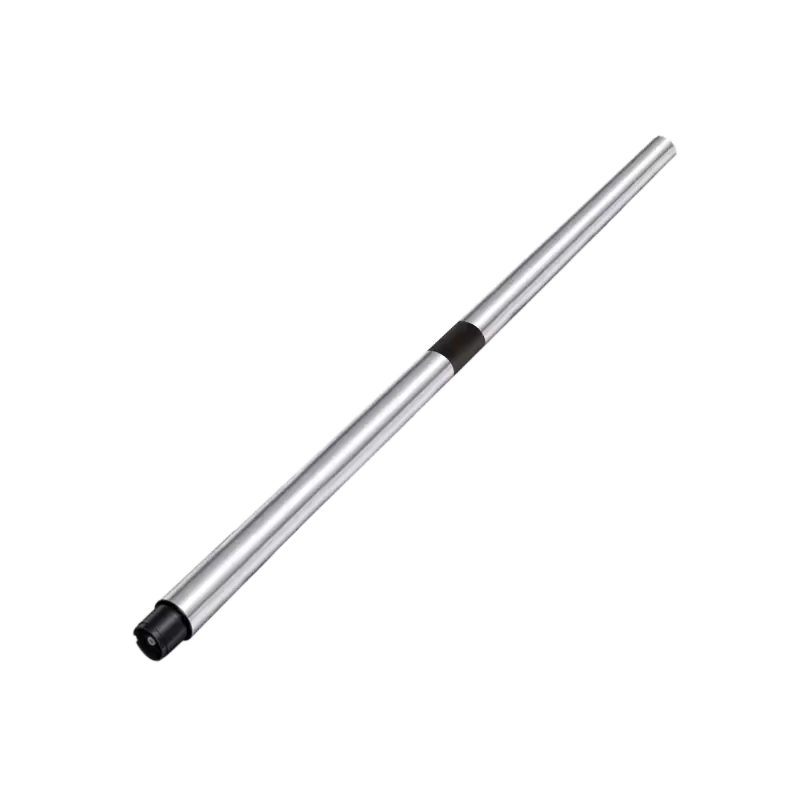Shenyang Sheng Hunting Displacement Sensor: Insight into Millimeter-Level Displacement
Release time: 2025-07-25
Whether it’s the winding embankments of highways, steep mountain slopes, bridges spanning rivers, tunnels through mountains, or towering wind turbine towers, subtle and ongoing displacements often signal major safety hazards early on. Timely and precise detection of these millimeter or even sub-millimeter changes is critical for disaster prevention and ensuring safety.
Shenyang Sheng Hunting Software Technology Co., Ltd., leveraging its deep expertise in information security and system development, has extended its technical advantages to the field of physical world safety monitoring. The company has introduced its core product: the Multi-Dimensional Micro-Magnetic High-Precision Displacement Monitoring System. At the heart of this system is the displacement sensor. So, how does this precise device work?
Core Principle: Capturing Subtle Changes in Magnetic Fields
Unlike traditional displacement measurement methods that rely on optical or mechanical contact, Shenyang Sheng Hunting’s displacement sensor utilizes innovative micro-magnetic sensing technology. Its working principle can be summarized in the following key steps:
Establishing a Reference Magnetic Field: The displacement sensor contains a precision micro-magnetic source, which creates a stable and controllable reference magnetic field around the sensor. This magnetic field serves as the “ruler” for subsequent measurements.
Inserting a Magnetic Target: A specially designed magnetic target with unique magnetic characteristics is firmly installed at the monitoring point (such as potential slip surfaces on slopes, key supports of bridges, joints in tunnel segments, or the ground near wind turbine foundations).
Sensing Magnetic Field Disturbance: The displacement sensor is fixed at a stable reference point (in relation to the target position). When the monitored object undergoes displacement (whether horizontal movement, vertical settlement, or tilting), the magnetic target’s spatial position relative to the sensor changes.
Precise Magnetic Field Measurement: The displacement sensor integrates a highly sensitive multi-dimensional magnetic sensing array, capable of detecting minute changes in the spatial magnetic field vector (strength and direction) caused by the target’s displacement. This change is three-dimensional, containing displacement information in the X, Y, and Z directions.
Signal Conversion and Calculation: The precision circuits inside the displacement sensor amplify, filter, and convert the weak magnetic signals into high-precision electrical signals. Proprietary algorithms then perform complex calculations on these multi-dimensional electrical signals. The algorithm analyzes the patterns and extent of the magnetic field vector changes and converts them into the precise displacement of the target relative to the sensor in multiple spatial directions (typically X/Y horizontal, Z vertical). This process overcomes the impacts of environmental temperature changes and electromagnetic interference, ensuring data accuracy.
Data Transmission and Security: Thanks to Shenyang Sheng Hunting’s expertise in information security, the high-precision displacement data is transmitted to the backend monitoring data center in real-time or near-real-time, through a secure communication channel that may include encryption or security protocols, ensuring data security during transmission.


High Precision and Multi-Dimensional Representation
High Precision: The core lies in the high-sensitivity magnetic sensing elements and precise signal processing algorithms. They can capture extremely weak magnetic field changes caused by millimeter or even sub-millimeter displacement and eliminate noise interference through algorithms, ultimately outputting high-precision displacement values as per design requirements.
Multi-Dimensional: The sensor’s internal multi-dimensional magnetic sensing element array, combined with advanced calculation algorithms, allows it to measure displacement components in multiple directions simultaneously. This stable displacement monitoring system is crucial for analyzing slope slip directions, complex deformations of bridge supports, convergence or misalignment in tunnel linings, and more, providing spatial displacement vector information rather than just scalar values in a single direction.
Why It Is Suitable for Large-Scale Infrastructure
- Non-Contact, Long Distance: The sensor does not require physical contact with the target and detects displacement through the spatial magnetic field. This is ideal for installation in hard-to-reach or harsh environments (such as underground, towering structures, humid, dusty areas). The measurement distance can range from several meters to tens of meters (depending on the sensor model and design), meeting the needs for large-scale infrastructure monitoring.
- Strong Anti-Interference: Micro-magnetic technology is less affected by visible light, rain, fog, dust, and other environmental factors, making it more adaptable than optical methods.
- Long-Term Stability: The core magnetic sensing elements and reference design have excellent long-term stability, suitable for applications requiring continuous monitoring for months or even years.
- Comprehensive Multi-Dimensional Information: It provides multi-dimensional displacement data, offering a more comprehensive reflection of structural deformation.
- Easy to Deploy and Integrate: The sensor and target are compact, easy to install, and can be seamlessly integrated into automated monitoring systems.
Shenyang Sheng Hunting’s Unique Value
Shenyang Sheng Hunting integrates its core capabilities in information security prevention system development and innovative product development into the displacement monitoring system. This is reflected not only in the reliability and anti-interference design of the sensor hardware itself but, more critically, in:
- Core Algorithm: The proprietary algorithm that precisely calculates multi-dimensional micro-magnetic signals, eliminates errors, and guarantees accuracy is a key competitive advantage.
- Data Security: From the sensor to the data center, the transmission chain incorporates information security measures, ensuring the confidentiality and integrity of monitoring data during transmission.
- System Integration: The sensor is the “nerve ending” of the entire monitoring system, seamlessly integrated with the backend data analysis platform, together forming a reliable infrastructure safety early-warning system.
Shenyang Sheng Hunting’s high-precision displacement sensor acts as a”magnetic radar”deployed at critical nodes in infrastructure. By precisely detecting the spatial magnetic field vector changes caused by the displacement of the magnetic target, combined with advanced signal processing and calculation algorithms, it non-contactedly and accurately acquires minute displacement information in multiple directions. This technology provides engineers with a “hawk-eyed” view into the structural health status, offering a solid technological backbone for ensuring the long-term safe and stable operation of embankments, slopes, bridges, tunnels, wind turbine towers, and other critical infrastructure. At its core, this is the deep integration of precision hardware, core algorithms, and information security concepts.


